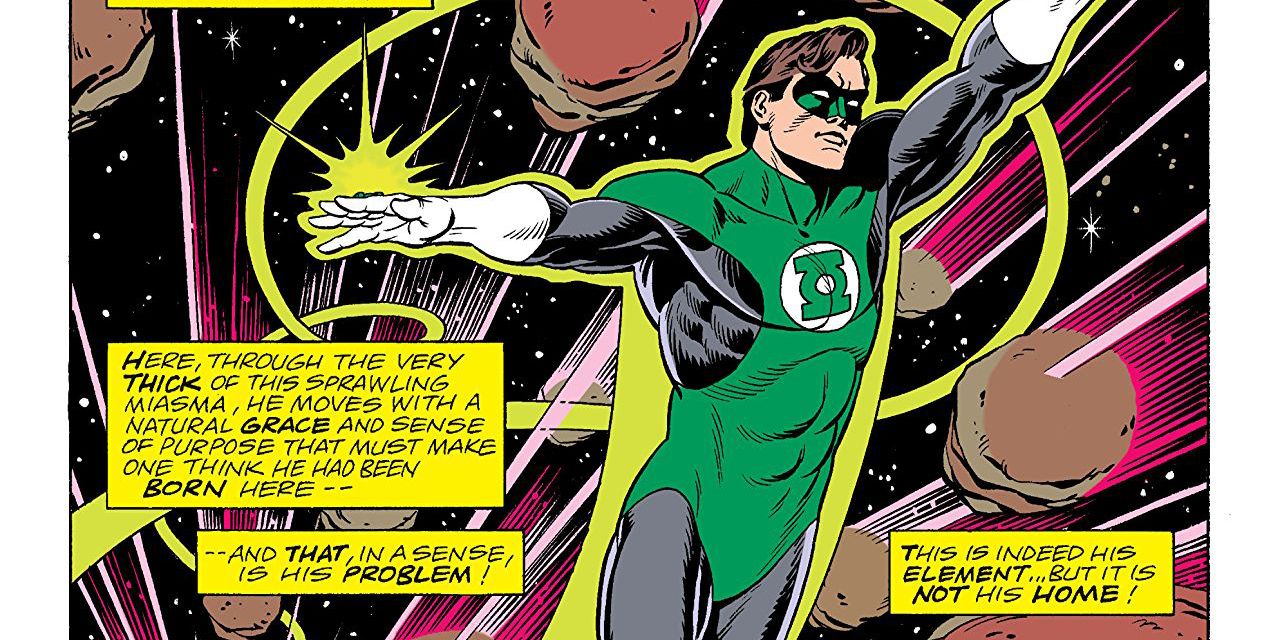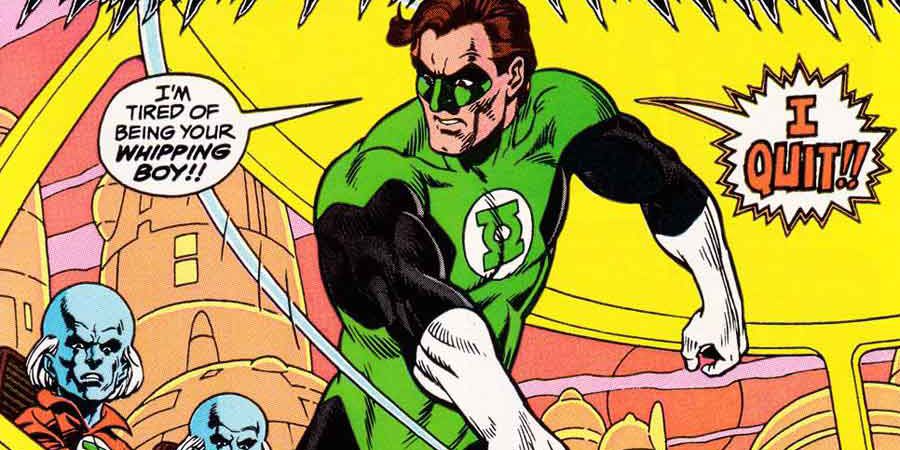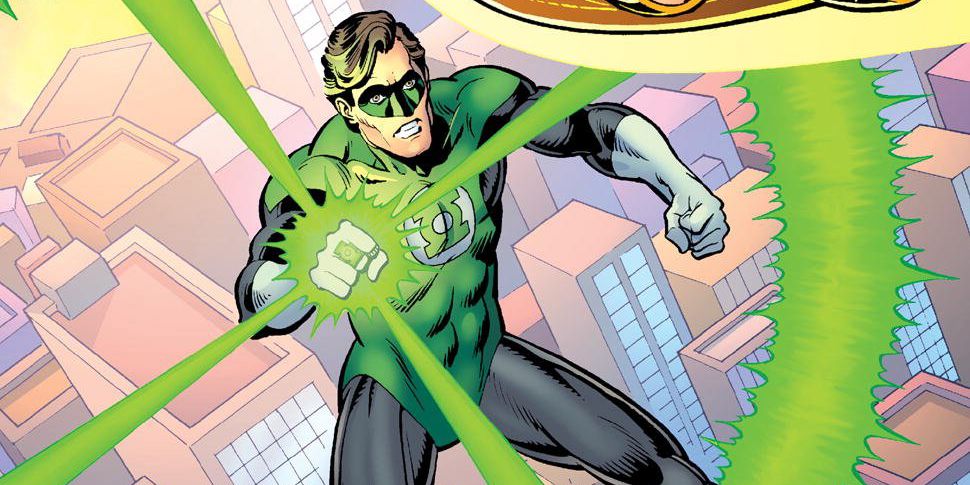"This is indeed his element, but it's not his home!"The late, great Len Wein wrote that line in 1984's Green Lantern (Vol. 1) #172, a piece of narration referring to Hal Jordan, the Green Lantern of Earth, who was at a crossroads. Should he live in space, among the cosmos fulfilling his wildest dreams, or live on Earth, bound to soil but among those he loves? It's a powerful internal conflict that happened to be the focus of an entire arc Wein wrote, with Dave Gibbons on art duties. Together, the pair brought a close to Jordan's arc for a time, having a hero walk away from his calling -- albeit briefly. As a result, they fundamentally changed Green Lantern, an effect that lasts to this day.Let's look back on Green Lantern's test of faith over the course of Wein and Gibbons' landmark nine-issue take on Hal Jordan, the Silver Age Green Lantern. RELATED: Comics Industry Mourns Len Wein, Remembers his Legendary CareerWein and Gibbons' arc picks up after Hal has been exiled to space for an entire year. The Guardians chose this punishment for Earth's Green Lantern because they believed the hero was spending too much time on his home planet, ignoring the other worlds in his Space Sector, for the most part. It's a bit meta (as it reflects previous writers' decisions to have Hal's exploits mostly on Earth), but presented a valid argument to explore; namely, why doesn't Hal spend as much time on other planets as he does on Earth? At the end of his exile, Hal decides to confront the Guardians, attempting to convince them he deserves to return to Earth to spend time with his friends and family. Apprehensively, they grant him this wish. Upon returning to Earth, Hal of course rushes to Ferris Aircraft, his longtime employer, where he intends to meet up with his former flame, Carol Ferris, only to "catch" Carol in a seemingly intimate moment with a blonde stud. Enraged, Hal goes off to blow off some steam by stopping a petty crime. Later, he confronts Carol, only to learn that the blonde hunk was, of course, just a friend. Hal had negatively projected the entire situation.This moment can be viewed as melodramatic, unrealistic or silly on the surface, but it's actually quite honest when you dig a little deeper. This emotional reaction Hal has is something a lot of us can relate to -- that anxiety, worry that people have moved on in the wake of our absence, and the negative projection and assumptions that we make when we're not around to assess reality for what it is.
Page 2: [valnet-url-page page=2 paginated=0 text='Wein%20and%20Gibbons%20Built%20Up%20the%20Guardians%27%20Ruthlessness%20that%20Fueled%20Future%20GL%20Stories']
Wein and Gibbons Built Up the Guardians' Ruthlessness that Fueled Future GL Stories
The first issue in the arc also offers a taste of the Guardians' sheer ruthlessness and lack of compassion. While they're supposed to be the "good guys," Wein and Gibbons portray a more hardened version of the protectors of the universe, delivering a more controversial take on Hal's superiors that makes the reader really question their motives and integrity. This thread would, of course, be explored deeper throughout the '00s when writer Geoff Johns took the reins of the franchise.
RELATED: Wein’s “Swamp Thing†Homecoming Blurs the Lines Between Man, Monster & Hero
The next few issues deal with Hal's exploits on Earth, serving up more traditional superhero fare. What develops is Hal's connection to his home planet and eventual realization of what really matters to him: his (super)friends and relationship to Carol. By the penultimate issue of Wein and Gibbons' arc, the Silver Age Green Lantern is presented with an ultimatum by his bosses: it's either the Green Lantern Corps, or Carol. Hal can't have both -- he has to make a choice.
Naturally, he seeks out advice from his best buddies on the Justice League. In issue #179, Hal goes to Green Arrow (Oliver Queen), The Flash (Barry Allen) and Superman (Kal-El/Clark Kent) for counsel. Wein and Gibbons set aside action sequences for interpersonal superhero character development, digging deeper into each hero, and how they balance their personal lives and super-identities.
Oliver tells Hal to go after his love. Barry is too occupied with his own problems to give Hal a clear-cut answer. And Kal, of course, values the call of duty over personal gratification. This doesn't really help Hal -- on the surface -- but illustrates an important underlying truth: no one can decide your work-life balance for you. It's completely up to the individual. So, Hal makes his choice.
It's Carol. Hal decides to give up on being a Green Lantern, and in an unprecedented move, Wein and Gibbons chose to have Hal relinquish his superhero identity in favor of happiness. Novel, isn't it?
Even making his decision, Hal isn't quite sure it's the right choice. It's a nice, little (but important), touch from Wein and Gibbons. At issue #180's end he ponders his decision: "The choice was mine to make, and I know I've made the right one...haven't I?" And that's how the issue ends, with a question. How fitting. How true to life.
RELATED: CONVERSATIONS OF CONVERGENCE: DiDio & Wein Talk Jack Kirby at DC, Mega-Events & More
I initially read this arc during my first year at university, when I permanently left home. I made a choice to pursue my passions, and while Wein and Gibbons Green Lantern didn't give me any answers, it taught me that life decisions like that are unique to the individual, requiring an important balance -- which always come with consequence, and doubt.
Though Hal would return to his superhero duties, Wein and Gibbons' work left a lasting impact on Earth's Green Lantern. They questioned his commitment to the Corps. They questioned his faith in his friends and himself. They questioned what it means to balance love and passion. It's a wonderful work of art and, over thirty years later, it continues to get better with age.


